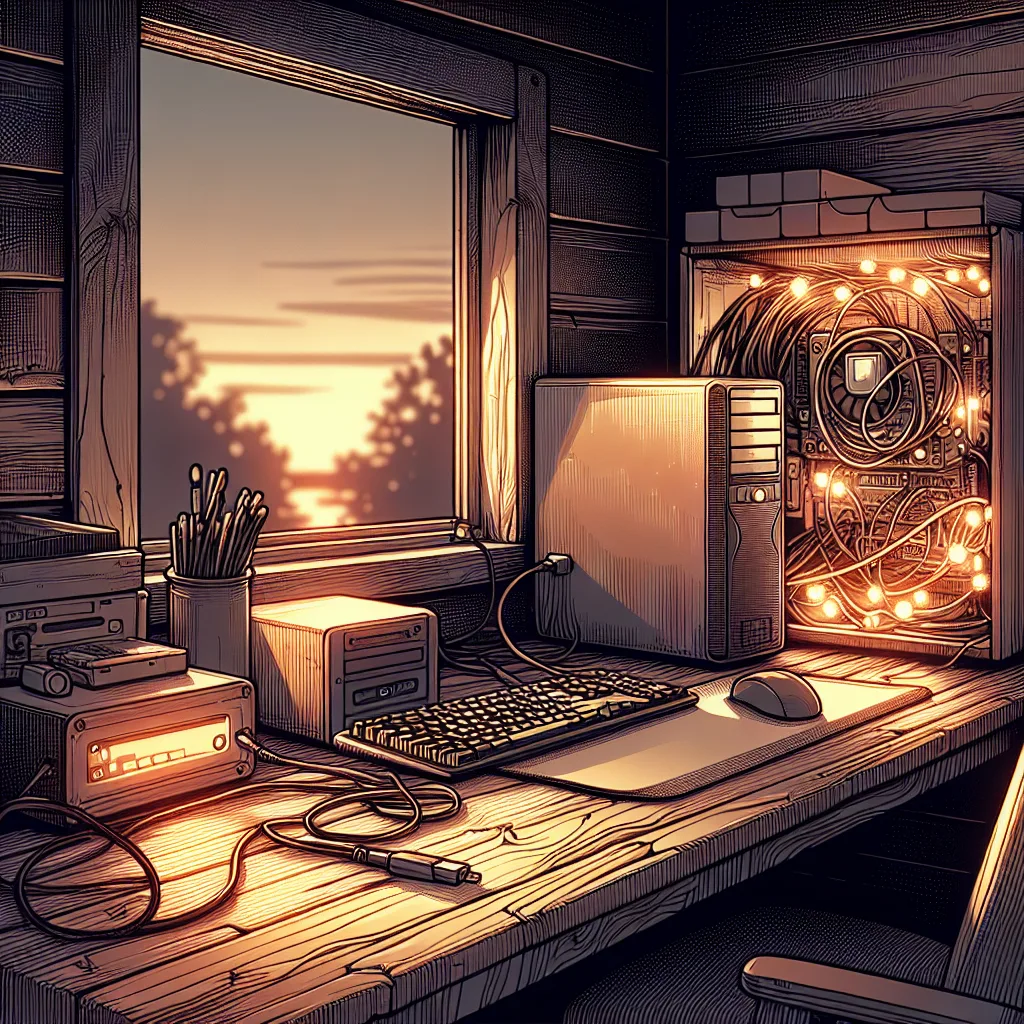Thinking about building your first homelab? Follow my journey from a pile of old parts to a working home server. It’s easier than you think to start!
It doesn’t look like much. Just a small stack of black and grey boxes tucked away on a shelf, with a few blinking green and orange lights to prove they’re alive. But this little pile of technology is the start of a project I’ve been putting off for years: my first homelab.
If you’ve ever browsed certain corners of the internet, you’ve probably seen them. Massive server racks with dozens of machines, intricate network diagrams, and enough computing power to launch a small satellite. It’s impressive, but it’s also incredibly intimidating.
For the longest time, I thought that’s what a homelab had to be. Expensive, complicated, and reserved for seasoned IT professionals. But I was wrong. It turns out, a homelab is simply a space to learn. And you can start with whatever you’ve got.
So, What Is a Homelab, Anyway?
In simple terms, it’s a personal server (or servers) that you run at your own home. It’s your private sandbox for tinkering with technology.
Think about all the digital services you use. Streaming music, storing photos, using an app to turn your lights on. Most of that runs on servers in a data center somewhere. A homelab lets you bring some of that capability into your own house. It’s a place to host your own applications, experiment with enterprise-grade software, and ultimately, learn how things really work.
You get to be the system administrator, the network engineer, and the user, all at once.
Why Bother Building One?
I had a few reasons.
First, I was curious. I work with technology, but I often only see a small piece of the puzzle. I wanted to understand the whole stack, from the physical hardware up to the application a person uses. There’s no better way to learn than by doing (and by breaking things in a safe environment).
Second, I wanted more control over my own data. Services like Google Photos and Dropbox are convenient, but they come with privacy trade-offs and subscription fees. The idea of hosting my own private cloud for photos and files was really appealing.
And finally, I just wanted a place to play. I wanted to test out things I’d read about, like Docker containers, virtualization, and network-wide ad-blocking, without messing up my main home network.
My Humble Beginnings: The Hardware
This is the part that stops most people, but it shouldn’t. My setup is proof that you don’t need to spend a fortune. Here’s what my “lab” consists of:
- An old mini-PC: It’s a refurbished Dell OptiPlex Micro I found online. It’s small, quiet, and sips power, but its i5 processor is more than enough to run a few virtual machines.
- An external hard drive: Just a simple 4TB USB drive I already had. For now, it’s handling my media and file storage. It’s not a fancy NAS, but it works.
- A Raspberry Pi 4: This little guy is perfect for lightweight, always-on tasks. I plan on using it for network-level ad blocking with Pi-hole.
- A basic network switch: Nothing fancy, just an 8-port unmanaged switch to connect everything.
That’s it. No rack, no server-grade components. Just a few pieces of consumer hardware that I cobbled together. The whole thing cost less than a new smartphone.
The First Small Victory
After getting everything plugged in, my first goal was to install Proxmox, a popular open-source virtualization platform. It lets you run multiple virtual computers on a single physical machine.
I’ll be honest: it was a bit of a struggle. I had to re-format the USB installer three times. I couldn’t figure out why it wasn’t getting a network connection. But after a couple of hours of searching forums and tweaking settings, I finally saw the Proxmox login screen in my web browser.
That small win felt huge.
In that moment, it wasn’t just a pile of hardware anymore. It was a server. My server. And I can’t wait to see what I learn with it next. If you’ve been on the fence, maybe this is your sign. Start small, use what you have, and just get started.
